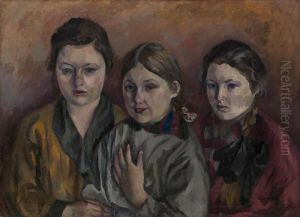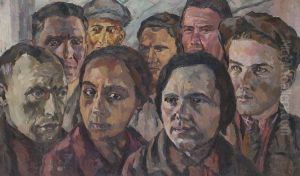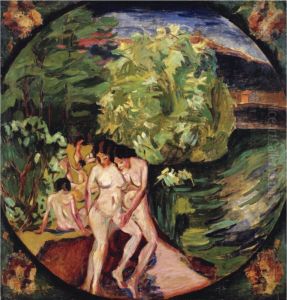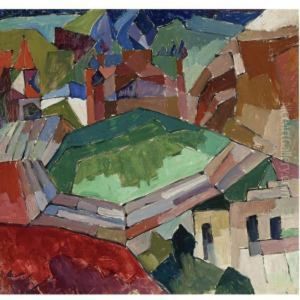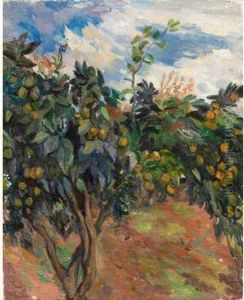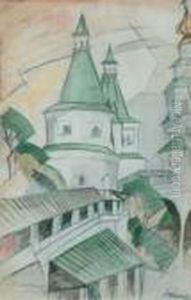Aristarkh Vasilievic Lentulov Paintings
Aristarkh Vasilievich Lentulov was a notable Russian avant-garde artist associated with several key artistic movements of the early 20th century, including Cubo-Futurism and Rayonism. Born on January 4, 1882, in the town of Nizhny Lomov, near Penza, Lentulov showed an early interest in art and pursued his passion by studying at the Moscow School of Painting, Sculpture, and Architecture.
In 1910, Lentulov traveled to Paris, which was then the epicenter of the art world. During his stay, he was heavily influenced by the works of the Post-Impressionists and the burgeoning Cubist movement. He attended the Académie de La Palette, where he absorbed the radical ideas of contemporary Western art, which he would later merge with traditional Russian iconography and folk art.
Upon his return to Russia, Lentulov became an active figure in the Moscow avant-garde scene. He was a key member of the Jack of Diamonds (Bubnovy Valet) group, which was instrumental in introducing the Russian public to contemporary trends in European painting. Lentulov's own work evolved to incorporate the geometric forms of Cubism, the vibrant color palette of Fauvism, and the dynamic movement of Futurism, ultimately contributing to the development of Rayonism, a Russian abstract art movement.
One of his most famous works, 'St. Basil's Cathedral,' exemplifies his distinctive style that combined bold color, dynamic composition, and a unique synthesis of modern artistic techniques with traditional Russian motifs.
During the 1920s and 1930s, Lentulov's work became more representational, and he took up teaching positions at various art institutions, including the Vkhutemas, the Russian state art and technical school. Lentulov's later years were marked by the increasingly restrictive Soviet cultural climate, which forced many avant-garde artists to adapt or abandon their experimental approaches.
Aristarkh Lentulov passed away on April 15, 1943, in Moscow. Despite the ebb and flow of his artistic acclaim over the years, today he is celebrated as one of the pioneers of Russian avant-garde art, and his works continue to be exhibited in major museums in Russia and around the world.


